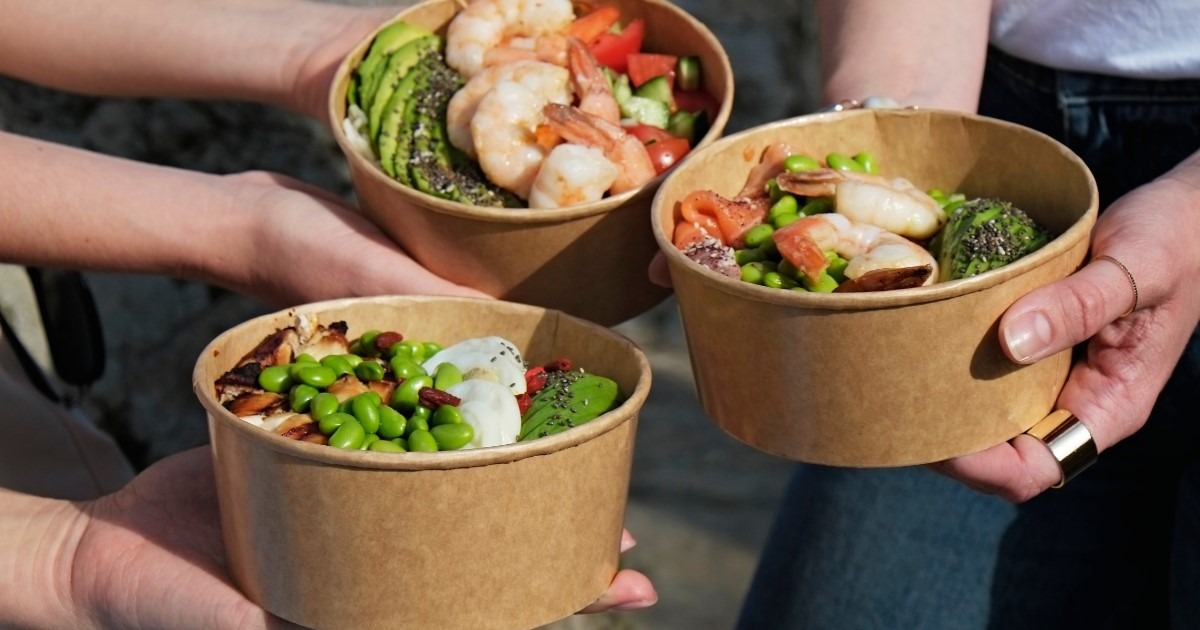Restaurant Industry Challenges in 2025 – How to Stay Profitable in a Shifting Landscape
Table of contents
-
Challenges Facing Restaurants in 2025
-
1. Rising Food Costs & Supply Chain Issues
-
2. Labor Shortages & Operational Efficiency
-
3. Profit Margins Under Pressure
-
4. Evolving Consumer Expectations & Dining Trends
-
How Can Restaurants Maintain Profitability?
-
1. Managing Rising Food Costs & Protecting Profit Margins
-
2. Addressing Labor Shortages & Improving Efficiency with Technology
-
3. Meeting Changing Consumer Expectations
-
4. Prioritizing Sustainability & Waste Reduction
-
Stay Ahead of the Game with Riviera Produce
Menus have always been and will always be the soul of a restaurant. Yet here we are in 2025, still grappling with challenges that have been looming for years. The industry has always been fast-paced and unpredictable, but this year is shaping up to be even more uncertain. Rising costs, ongoing labor issues, and shifting consumer expectations are pushing restaurants to adapt quickly or risk falling behind.
But with every challenge comes opportunity. Those who embrace innovation, streamline operations, and strengthen supplier relationships can not only stay profitable but thrive in this evolving landscape.
Let’s take a closer look at the biggest challenges facing restaurants in 2025 and, more importantly, how to overcome them.
Challenges Facing Restaurants in 2025
1. Rising Food Costs & Supply Chain Issues
While inflation has slightly decreased compared to previous years, rising food costs remain one of the biggest challenges for the restaurant industry. USDA estimates that in 2025, prices for all food might increase by 2.2 percent. In New York City, 34% of operators have reported food and inventory costs as the biggest source of financial strain in the past year.
Adding to the challenge, the Trump administration plans to impose tariffs on imports from Mexico, Canada, and China. This move would increase food costs for items like avocados, baked goods, and seafood. The tariffs, including 25% for Canada and 10% for China, will begin Feb. 4, while the 25% proposed tariff on Mexican imports is currently delayed for one month.
Beyond inflation, supply chain disruptions make food sourcing unpredictable. Global conflicts, trade restrictions, and labor shortages in the agricultural sector are causing delays and shortages of key ingredients. Extreme weather events are further complicating the issue. A bad growing season in California or Mexico can mean skyrocketing fresh fruit and vegetable prices.
For restaurant owners, this means an ongoing battle to maintain food quality and portion sizes without driving menu prices too high.
2. Labor Shortages & Operational Efficiency

Finding and keeping skilled kitchen and front-of-house staff remains one of the biggest struggles for restaurants. With recent increases in minimum wage (with a notable $16.50 in New York City) and increased turnover rates, many restaurant owners cite recruiting and retaining staff as their main challenge in 2025.
Several factors are driving this crisis:
- High turnover rates in the industry mean restaurants are constantly hiring and training new employees. According to TouchBistro’s State of Restaurant report, 44% of operators cited staff turnover as their number one labor concern in 2024, with many reporting low morale among their teams.
- Many workers demand better wages, benefits, and working conditions, forcing restaurants to increase pay even as profits decline.
- Younger generations are less interested in traditional restaurant jobs, preferring roles in the gig economy or jobs with more flexibility.
Without enough staff, restaurants risk declining customer satisfaction and lower repeat business.
3. Profit Margins Under Pressure
Profit margins have always been tight in the restaurant business, but rising costs are squeezing them even further.
While average profit margins have slightly increased to 9.8% in 2024 compared to 9.3% in 2023, high overhead costs are impacting small and independent restaurants, which are struggling to compete with large franchises.
One of the biggest struggles is balancing menu pricing. With consumers being more cost-conscious, restaurants must carefully balance menu pricing and add value to their services to attract more customers.
4. Evolving Consumer Expectations & Dining Trends

The way people dine is changing. Inflation has pushed consumers to be more mindful of their spending habits, while broader societal trends, like an increased interest in health and wellness, are shaping how people eat.
Operators report a significant increase in healthier and special menu items, including plant-based dishes and low-alcohol/no-alcohol beverage options. Local ingredient demand is also rising as consumers are more interested in where their food comes from and how it is produced.
Meanwhile, weight-loss drugs like Ozempic are reducing customers’ appetites, leading some restaurants to consider cutting back portion sizes.
In this post-COVID world, convenience is on the rise. Online ordering, delivery services, and ghost kitchens continue to grow in popularity. According to TouchBistro’s State of Restaurants report, 82% of respondents have seen an increase in takeout and delivery sales in 2024 compared to the previous year, and the trend is here to stay.
Order Wholesale Seasonal Produce
How Can Restaurants Maintain Profitability?
With rising costs and shifting consumer expectations, 2025 presents a tricky balancing act for restaurants. Operators must navigate price hikes and labor shortages while appealing to diners who are more cost-conscious than ever.
Consumers are feeling the pinch, demanding better value for their money, and restaurants need smart strategies to stay profitable without sacrificing quality or service. Here’s how restaurants can adapt in 2025:
1. Managing Rising Food Costs & Protecting Profit Margins
With food prices fluctuating and supply chains still unpredictable, controlling costs is key to maintaining profitability. Since ingredient prices are out of your control, the best strategy is to be proactive with purchasing, sourcing, and menu design.
Smart Sourcing
Start by strengthening relationships with reliable food suppliers. Partnering with a trusted wholesaler can help lock in consistent pricing, secure priority access to in-demand ingredients, and minimize the impact of shortages. Buying in bulk and sourcing seasonal produce also decreases costs while ensuring top-quality ingredients for your menu.
Waste Reduction
Reducing food waste is one of the most effective ways to protect margins in the kitchen. Smart inventory management, portion control, and cross-utilization of ingredients help maximize every dollar spent.
Menu Engineering
Beyond sourcing, menu engineering plays a crucial role in profitability. Rather than simply raising prices, focus on high-margin, low-labor dishes that require fewer costly ingredients but still deliver flavor and value. Incorporating important food trends in your offerings can also help attract new customers.
Dynamic pricing can also help – adjusting prices based on demand, offering specials during peak hours, or introducing exciting LTOs can boost revenue without deterring budget-conscious customers.
2. Addressing Labor Shortages & Improving Efficiency with Technology

With staffing challenges continuing, restaurants need to work smarter and integrate technology into their operations.
Invest in Automation
Self-service kiosks, mobile ordering, and digital POS systems can reduce the need for front-of-house staff while improving order accuracy.
Optimize Kitchen Operations
Pre-prepped ingredients and streamlined workflows can reduce labor costs without sacrificing quality. Implementing AI for BOH operations, such as AI inventory management or menu optimization, can significantly improve efficiency.
Create a Strong Workplace Culture
Better pay, clear career paths, employee training, and retention incentives can reduce turnover and keep employees engaged.
3. Meeting Changing Consumer Expectations

Customers have more choices than ever, so restaurants must stand out by offering what they want.
Expand Plant-Based and Allergen-Friendly Options
Plant-based remains a significant food trend in 2025. Vegan and vegetarian options, gluten-free dishes, and no-alcohol beverages are must-haves for today’s changing dietary preferences.
Enhance Online Ordering and Delivery Operations
With takeout and delivery on the rise, restaurants can capitalize on this shift and focus on providing a seamless experience. Choose your ordering tech wisely to prioritize speed and accuracy without compromising quality.
Personalized Loyalty Programs
Beyond discounts, loyalty programs can foster customer retention by providing personalized offers. This data-driven approach can bring value to diners by offering relevant and personal offers at a time when consumers are increasingly searching for something extra to be worth their money.
4. Prioritizing Sustainability & Waste Reduction
Going green isn’t just good for the planet; it’s good for business. Sustainability is one of the leading food trends in 2025, and restaurants can cut costs and attract new customers by implementing eco-friendly practices.
Track Food Waste
Zero-waste practices, repurposing ingredients, and reducing excess waste can save money and increase efficiency.
Use Eco-Friendly Packaging
Eco-friendly packaging reduces waste and supports sustainability, attracting environmentally conscious customers while lowering disposal costs. It’s an easy way for restaurants to align with zero-waste practices.
Source Local and Seasonal Produce
Sourcing local and seasonal produce reduces carbon footprints, supports sustainable farming, and ensures fresher, higher-quality ingredients for your menu.
Stay Ahead of the Game with Riviera Produce
The restaurant industry in 2025 comes with its fair share of challenges, but with the right strategies, obstacles can become opportunities. Smart sourcing, efficient operations, and a pulse on evolving trends will keep your business thriving even in an unpredictable market.
Riviera Produce provides a reliable supply of fresh, high-quality ingredients with flexible ordering options to help restaurants navigate an unpredictable market.
With a wide selection of seasonal and staple produce, efficient delivery, and competitive prices, we ensure your kitchen stays stocked and your menu stays profitable no matter what comes next.
